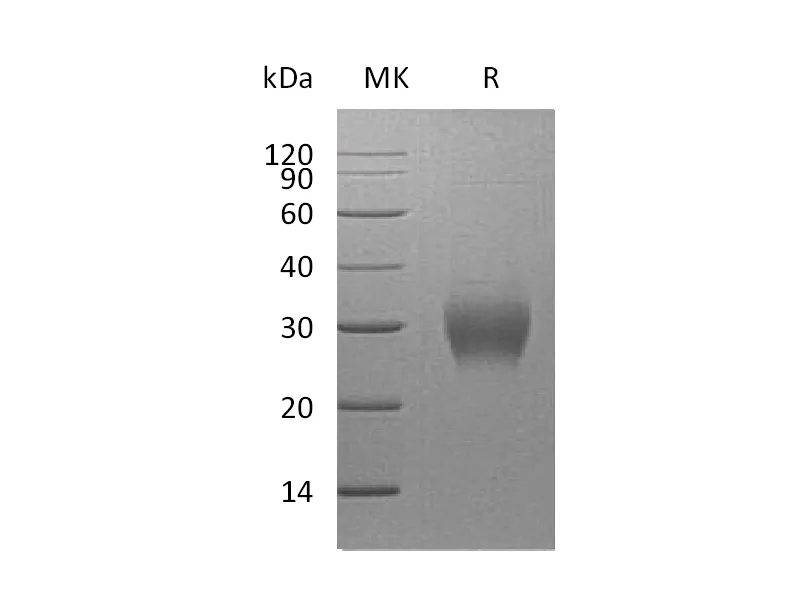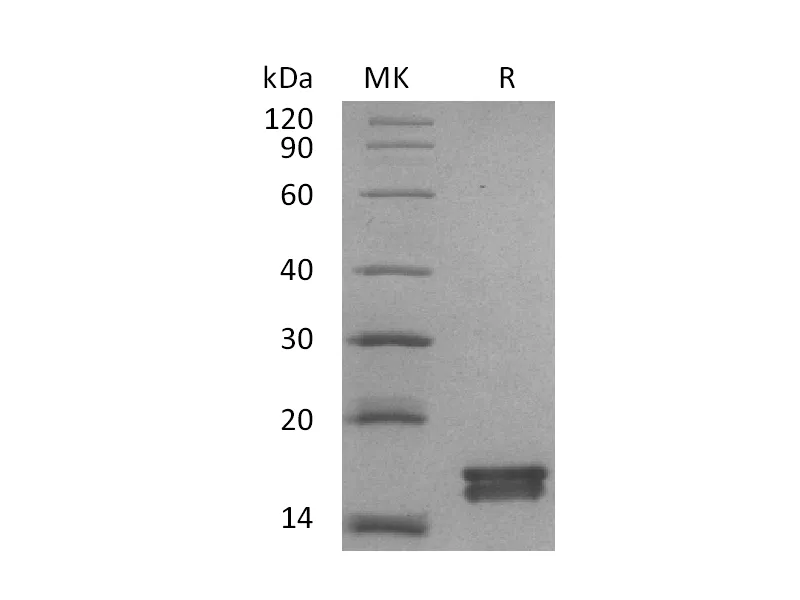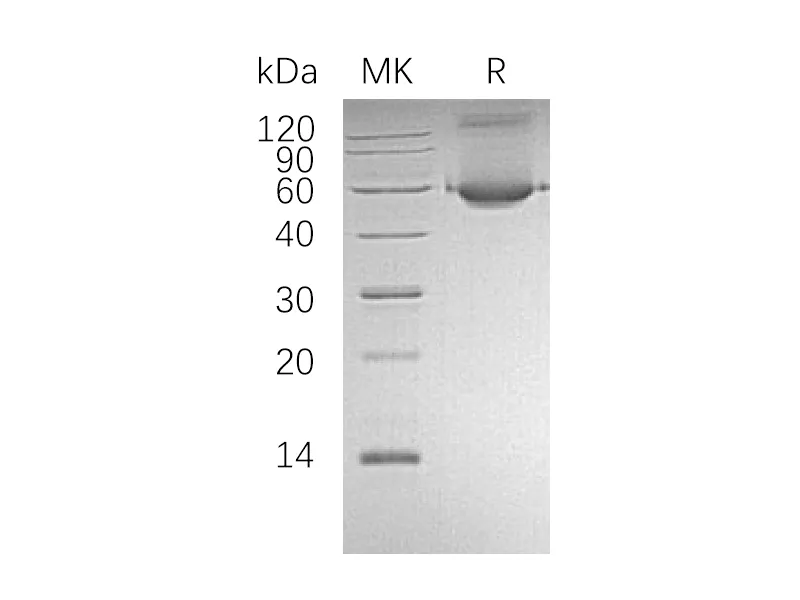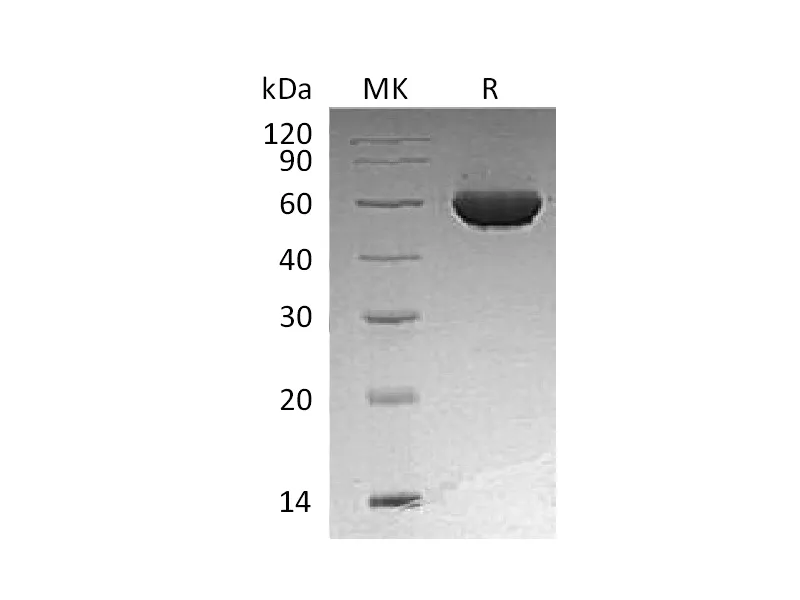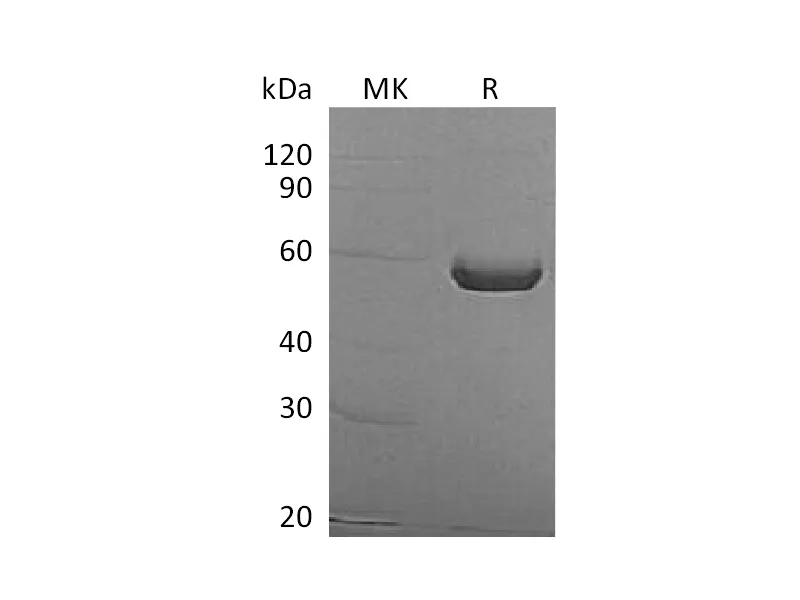| Name | Recombinant Human Asprosin (N-8His) |
| Purity | Greater than 95% as determined by reducing SDS-PAGE |
| Endotoxin level | <1 EU/µg as determined by LAL test. |
| Construction | Recombinant Human Asprosin is produced by our Mammalian expression system and the target gene encoding Ser2732-His2871 is expressed with a 8His tag at the N-terminus. |
| Accession # | P35555 |
| Host | Human Cells |
| Species | Human |
| Predicted Molecular Mass | 17 KDa |
| Buffer | Lyophilized from a 0.2 μm filtered solution of PBS, pH 7.4. |
| Form | Lyophilized |
| Shipping | The product is shipped at ambient temperature.Upon receipt, store it immediately at the temperature listed below. |
| Stability&Storage | Store at ≤-70°C, stable for 6 months after receipt.Store at ≤-70°C, stable for 3 months under sterile conditions after opening. Please minimize freeze-thaw cycles. |
| Reconstitution | Always centrifuge tubes before opening.Do not mix by vortex or pipetting.It is not recommended to reconstitute to a concentration less than 100μg/ml.Dissolve the lyophilized protein in distilled water.Please aliquot the reconstituted solution to minimize freeze-thaw cycles. |
Alternative Names
Fibrillin-1; FBN1; Asprosin; FBN
Background
Asprosin is a protein hormone that is produced by white adipose tissue in mammals (and potentially by other tissues), which is then transported to the liver and stimulates it to release glucose into the blood stream. In the liver asprosin activates rapid glucose release by a cAMP-dependent pathway. The glucose release by the liver into the blood stream is vital for brain function and survival during fasting. People with neonatal progeroid syndrome lack asprosin, while people with insulin resistance have it in abundance. In animal tests asprosin showed potential for treating type 2 diabetes. When antibodies targeting asprosin were injected into diabetic mice, blood glucose and insulin levels improved.
Note
For Research Use Only , Not for Diagnostic Use.

